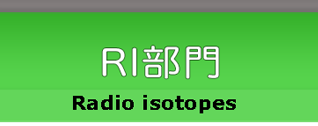Transformation from in vitro imaging to in vivo imaging
¬¼@¡iKafÕ®ïÐj@@@@@@@@@
x@qE¬R@RNqiÀ±ÀKxZ^[j
In the past half-century, radioisotope, especially the tracer experiment - tracing the behavior of substance with labeled compound labeled with beta and gamma ray - has been done mainly in the life science field. And, it brought innovative progress for research and development of the life science.
However, for tracer experiments, experimental animals should be treated invasively and progressive experiment with single animal was impossible.
On the other hand, Molecular Imaging has developed in recent 7 or 8 years, and it can treat and monitor one experimental animal successively without invading, and it can gain detailed images of the inside of the animal body by radioisotope at high sensitivity and high resolution.
We are going to introduce the imaging of experimental animal by SPECT/CT and PET/CT by the instrument of Bioscan Inc., (USA) from among the Molecular Imaging.
From this method, it is possible to gain high resolution and high sensitivity image such <0.5mm of mouse or rat (in the case of SPECT/CT). Further more, this method can measure middle size animal such as rabbit, beagle dog, Macaca fascicularis and so on.
 OÖ OÖ
|
æªÖ
|
Last Updated 2011/8/1













